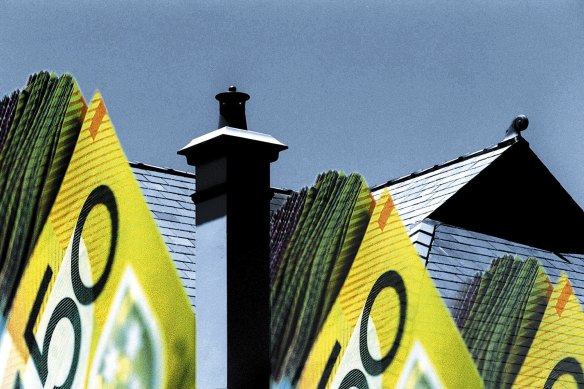This was published 1 year ago
Opinion
We’re struggling to buy our first home. Should we ‘rentvest’?
Paul Benson
Money contributorWe’re struggling to buy our first home. I’ve heard a few podcasts mention “rentvesting” recently. Is this a strategy that you think makes sense?
Rentvesting is where you rent the property you live in, and purchase an investment property elsewhere. It’s aimed at solving the problem where you can’t afford to buy in the suburb that you want to live in. You continue to rent in your preferred location for the lifestyle benefits but still have exposure to the residential property market via your investment property in a lower-cost area.

The tax and financial system is biased towards home ownership.Credit: Louise Kennerley
My view is this is a strategy to pursue if you must, but it’s a bit of a last resort. Australia’s tax and financial system is biased towards home ownership. Our primary residence is capital gains tax free, there’s no land tax, and the interest rate on the loan is lower than an equivalent investment property loan.
The rentvest advocates promote the fact that with this strategy the borrowing costs are tax-deductible, however in my view this is offset by the fact that the rental income is taxable. This is particularly the case over the long term where you would expect the loan to be reduced or at worst go sideways if on an interest-only arrangement. Whereas the rent should grow over time, meaning more and more taxable income.
With this cash flow benefit negated, it then largely comes down to the capital gains tax treatment, and here owning your home is way ahead due to the capital gains tax exemption on primary residences.
There are circumstances where rentvesting can work. Perhaps the investment property you buy is somewhere you want to retire to or move into later in life. Or it could be a reverse situation where you buy something, live in it for a few years, and then as a result of a job change, leave that property and rent it out, renting somewhere near your new employment.
As a primary strategy, however, I’m not sold on rentvesting. If you can, buy a home to live in.
My wife turns 60 next year, I am 56. We want her to retire at 60 from working in aged care. We are also planning on downsizing our home when she retires. We intend to make a $330,000 contribution to her super this year using the bring-forward rules. Having done that, can we still add $300,000 from the sale of our house?
The short answer here is yes you can. The downsizer contribution rules are completely independent of the other contribution limits. You need to have owned your home for at least 10 years.
The age at which you can make downsizer contributions was reduced at the beginning of this year. You can now make downsizer contributions from age 55, which means that potentially you could both make these contributions if that made sense in the overall scheme of things.
The main issue we see catching people out with this provision concerns the timing of the contribution. Your contribution to your super fund must occur within 90 days of the change of ownership of the property, which is typically the settlement date. With a lot happening around the move, that 90 days can whip by pretty quickly, and we’ve seen a few instances where people have missed the boat.
Check with your super fund what they require. There will be a form they will need you to complete so that this contribution gets categorised accurately.
Paul Benson is a Certified Financial Planner, and the host of the Financial Autonomy podcast. Send your questions to: paul@financialautonomy.com.au
- Advice given in this article is general in nature and is not intended to influence readers’ decisions about investing or financial products. They should always seek their own professional advice that takes into account their own personal circumstances before making any financial decisions.
For expert tips on how to save, invest and make the most of your money, delivered to your inbox every Sunday, sign up for our Real Money newsletter here.